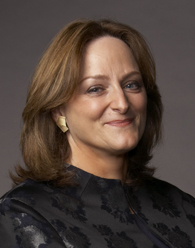PUBLIC LECTURE
The 2014-15 Antoinette de Vaucouleurs Memorial Lectureship and Medal
The eighteenth award of the Antoinette de Vaucouleurs Memorial Lectureship and Medal honors the distinguished American Astronomer Dr. Claudia Megan Urry.
The Growth of Supermassive Black Holes and Galaxy Evolution
Claudia Megan Urry
Israel Munson Professor of Physics and Astronomy
Chair, Department of Physics
Director, Yale Center for Astronomy and Physics
Yale University

Tuesday, December 2, 2014 · 3:30 PM [3:00 Reception]
RLM 15.216B [map]
The University of Texas at Austin
abstract
Multiwavelength surveys like GOODS and COSMOS indicate that most actively growing black holes are heavily obscured, and this fraction increases in the young Universe and in lower luminosity AGN. Most black holes grow in moderate luminosity AGN, which dominate the X-ray "background," rather than in luminous quasars. In the peak epoch of black hole growth, at z~1-3, such AGN are hosted in galaxies with significant disks, and thus cannot have undergone a recent major merger. Using morphological classifications from Galaxy Zoo (at z~0), we identify two distinct modes of galaxy evolution, with mergers and AGN feedback affecting only a minority. Mergers are more important at the high luminosity end, i.e., in quasars. Using a large-area hard X-ray survey ("Stripe 82X"), which finds quasars even in obscured systems, we are starting to fill in the last missing piece of a complete census of black hole growth across the luminous Universe.
About Dr. Urry
Dr. Urry received her Bachelors degree in Physics & Mathematics, summa cum laude, at Tufts University, and her PhD degree at Johns Hopkins University. Her post-doctoral work led her to the Center for Space Research at MIT, and subsequently the Space Telescope Science Institute. She is currently the Israel Munson Professor of Physics and Astronomy at Yale, and Director of the Yale Center for Astronomy and Physics.
Dr. Claudia Megan Urry has published more than 200 research papers on co-evolution of black holes and galaxies, accretion, jets, multi-wavelength surveys, unification of active galactic nuclei, and blazars.
In her research, her group carries out multi-wavelength imaging and spectroscopy (at radio, infrared, optical, UV, X-ray, and gamma-ray wavelengths), much of it from space, in order to understand the energetics, structure, and evolution of active galaxies (i.e. galaxies with unusually luminous cores powered by very massive black holes).
Dr. Urry has received the Annie Jump Cannon Award in Astronomy and the Woman in Space Science Award from the Adler Planetarium. She is a fellow of the American Academy of Arts and Sciences, the Connecticut Academy of Science and Engineering, and the American Physical Society.
Dr. Meg Urry serves or has served on a variety of influential committees, including the National Academy of Science’s National Research Council: Board of Physics and Astronomy, the Committee on Astronomy and Astrophysics, and the NASA Space Science Advisory Committee. She advises NASA on Hubble, Chandra, Spitzer, RXTE, ASCA and other space observatories.
More..

Dr. Claudia Megan Urry